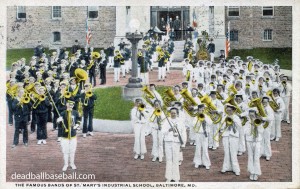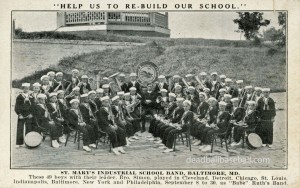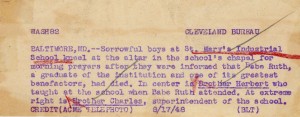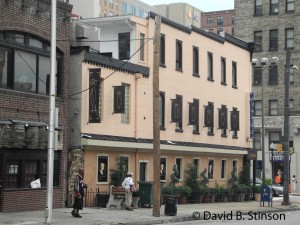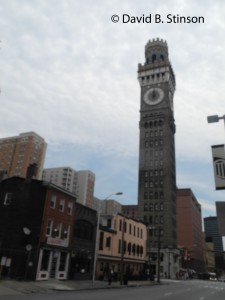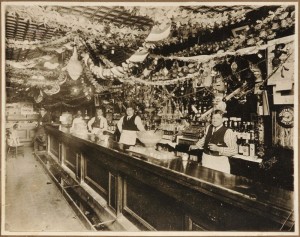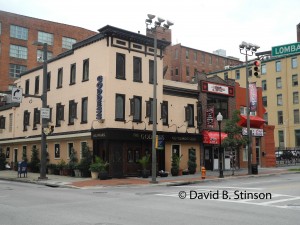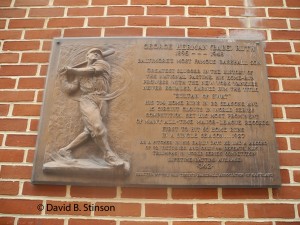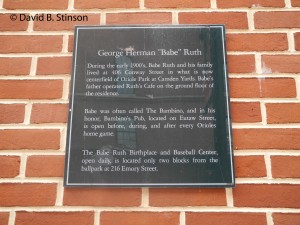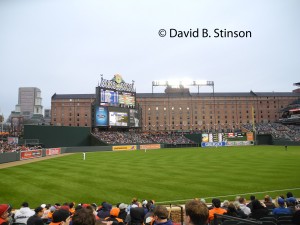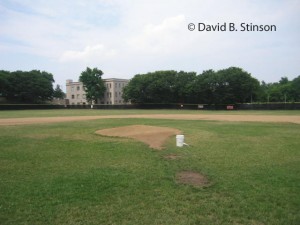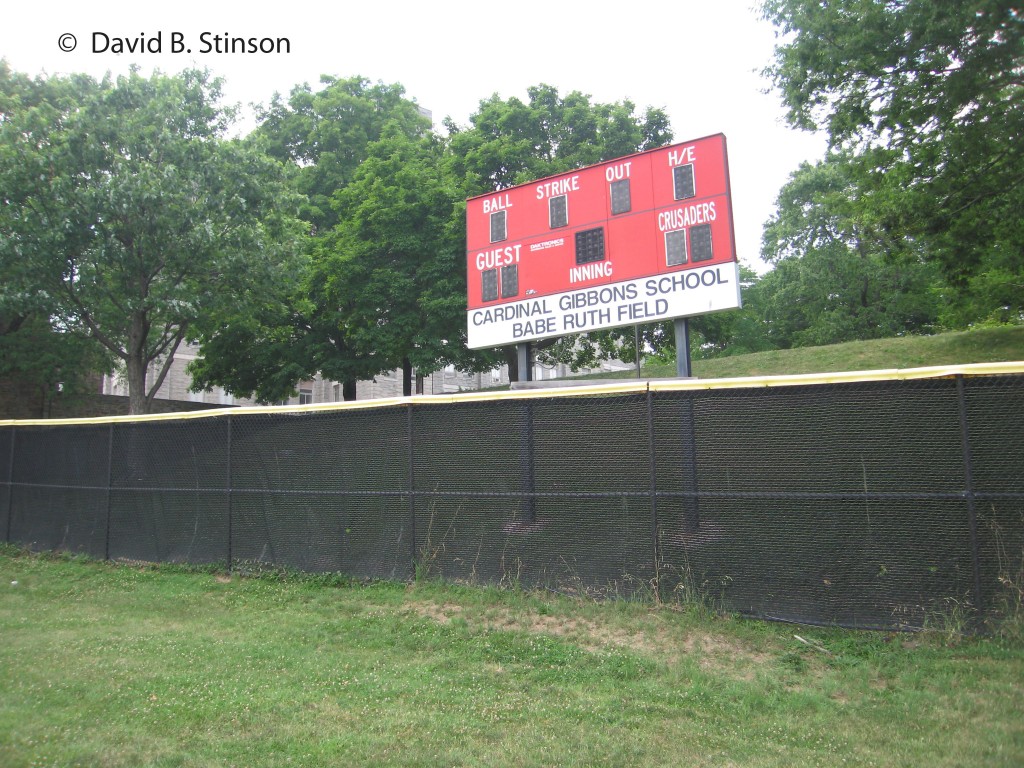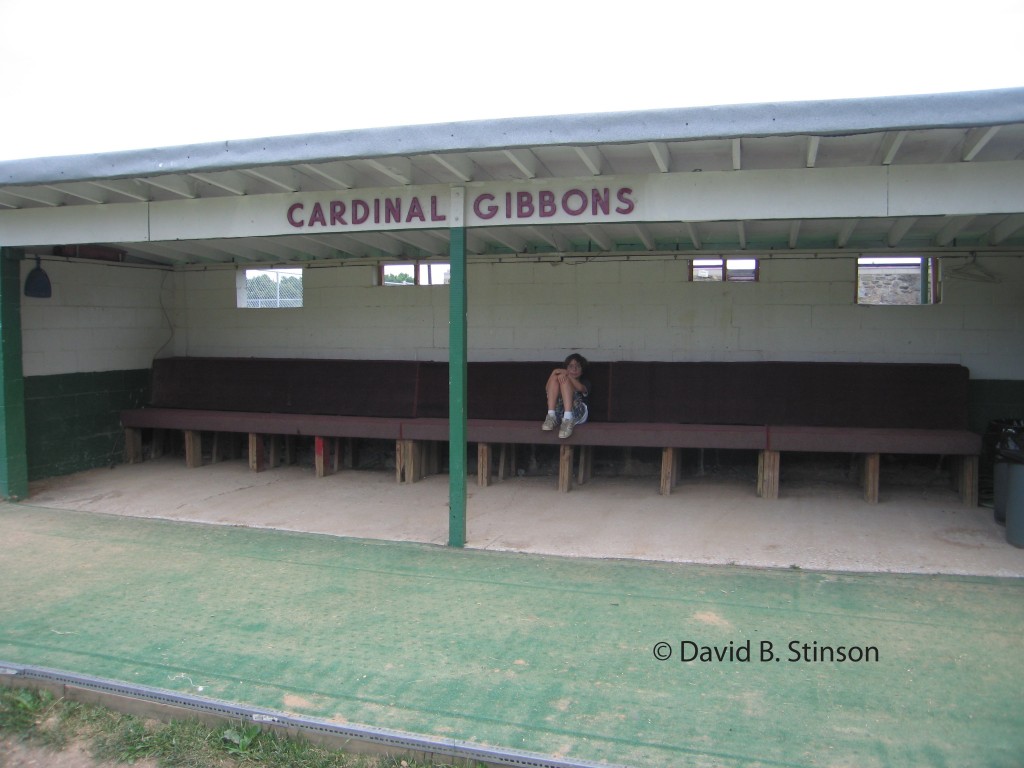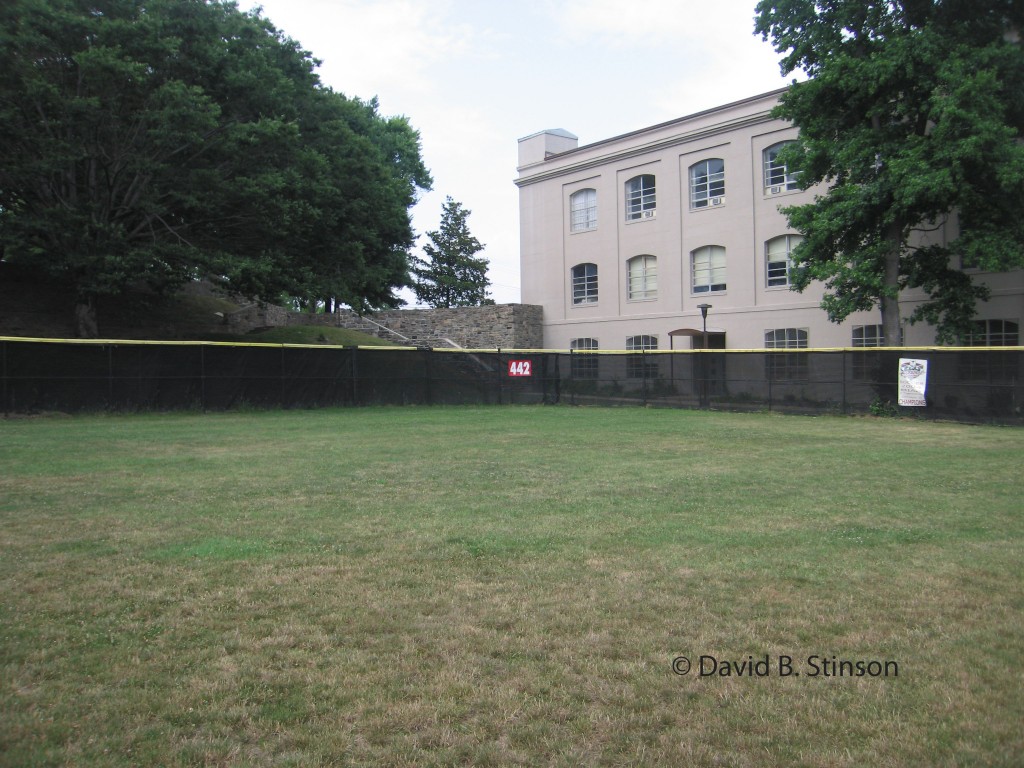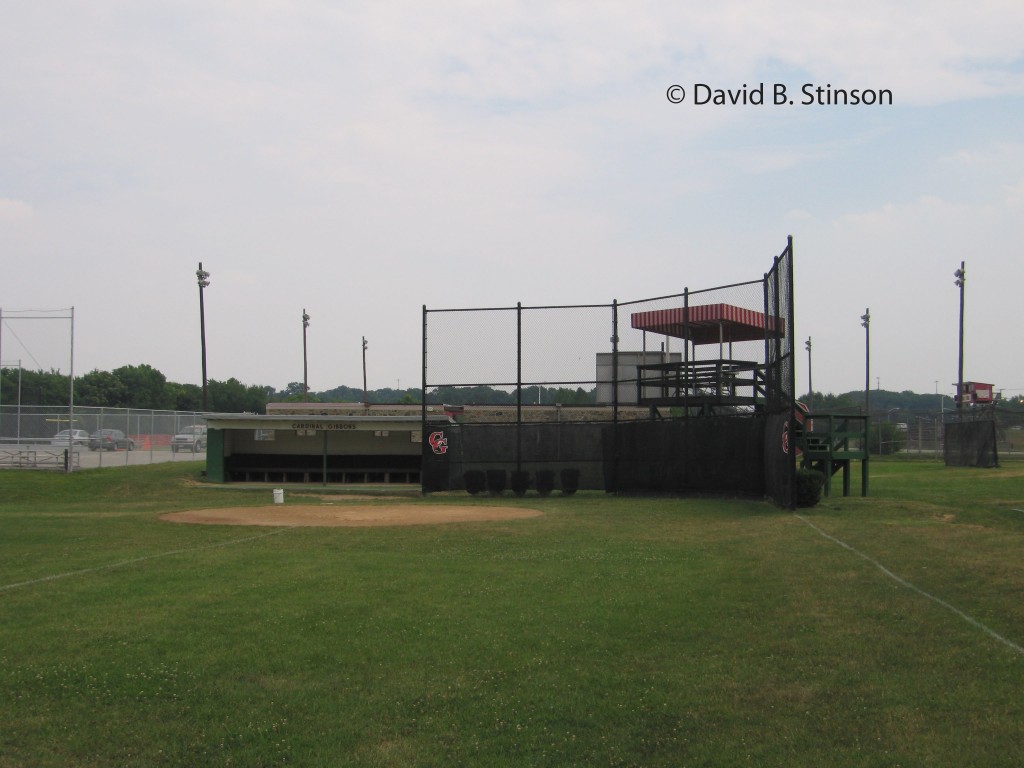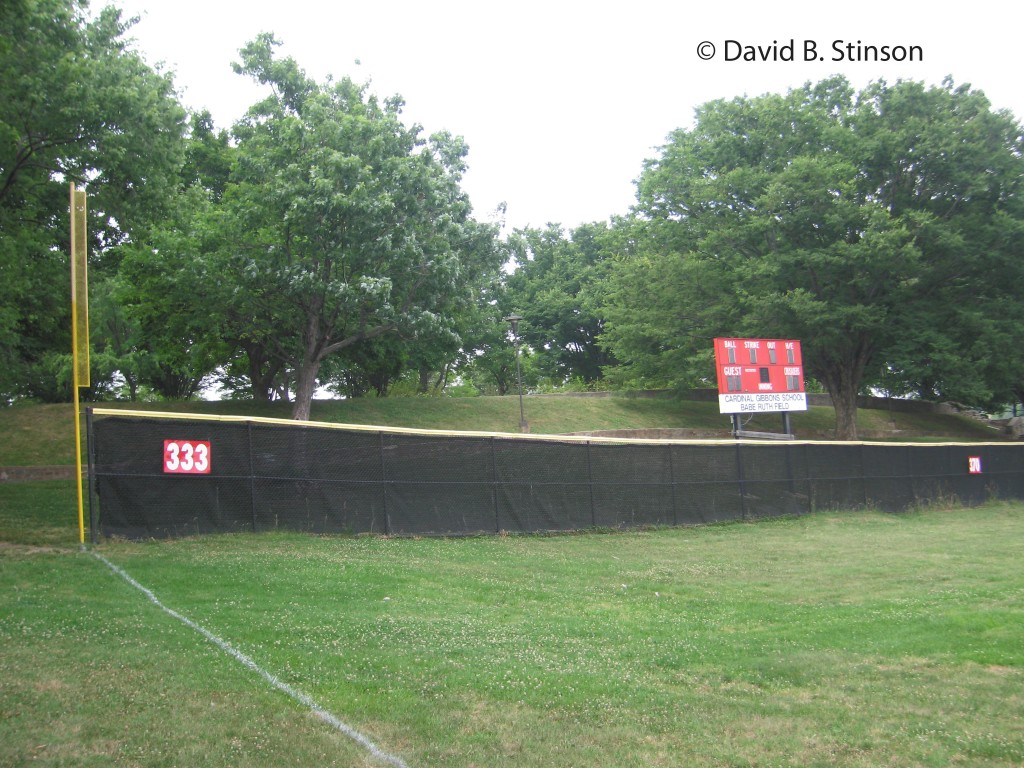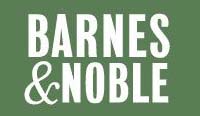In February 1914, George Herman “Babe” Ruth signed his first professional baseball contract in the office of Brother Paul Scanlon, the Superintendent of St. Mary’s Industrial School for Boys. Babe Ruth’s parents had signed their son over to the Xaverian Brothers when he was eight years old and Brother Paul, as superintendent of the school and Ruth’s legal guardian, was required to sign the player contract on his behalf. Present at the signing that day, in addition to Ruth and Brother Paul, were Jack Dunn, owner of the International League Baltimore Orioles, and Brother Gilbert, the Athletic Director at nearby Mount St. Joseph’s (High School) College (he was a friend of Dunn’s). Prior to that meeting, Dunn and Brother Gilbert had introduced Dunn to Brother Matthias Boutlier (or Boutelier), who was instrumental in helping Ruth develop his baseball skills. Ruth’s contract set his salary at $600 for the season.
The Baltimore Sun reported the signing on February 15, 1914:”[t]he Oriole magnate signed another local player yesterday. The new Bird is George H. Ruth, a pitcher, who played with teams out the Frederick road. Ruth is six feet tall and fanned 22 men in an amateur game last season. He is regarded as a very hard hitter, so Dunn will try him out down South.” On March 2, 1914, prior to Ruth’s departure for Fayetteville, North Carolina, where Dunn’s Orioles held spring training, Brother Paul took Ruth on a tear-filled tour of St. Mary’s so that Ruth could say goodbye to his friends at the school. Brother Paul then accompanied Ruth to Union Station in Baltimore, where he departed for North Carolina, on what was the first of Ruth’s many train rides.
Although Ruth later would become the most famous export of St. Mary’s Industrial School, at the time of his departure, it was the St. Mary’s Bands that perhaps had brought the school the most fame in Baltimore and around the country (John Phillips Sousa is said to have stated that St. Mary’s was the best high school band he had ever heard).

St. Mary’s Industrial School Souvenir Program, Annual Concert, April 24, 1914 Image (Huggins and Scott Auctions)
On April 24, 1914, just a month and a half after Ruth departed the school, St. Mary’s held its Annual Concert. Included in the school program was a now-famous photo of Ruth and his teammates, who in 1914 were league champions (according to the photo). The photo depicts the team grouped in front of the school’s bandstand or gazebo. Exactly five years to the day after that concert was performed, a fire started by a errant piece of coal destroyed most of the buildings at St. Mary’s.
The fire destroyed the main school building, although the chapel that sat at the corner of South Caton Avenue and Wilkins Avenue was spared.
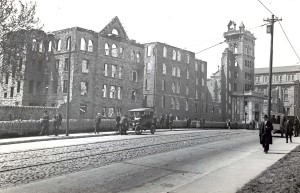
St. Mary’s Industrial School in 1919, After the Fire (Photo by Hildegarde Anderson of 3236 Ravenswood Avenue, Baltimore Sun Reprint of Hildegarde photo, 1962).
At the time of the devastating fire, Ruth was a member of the New York Yankees and well on his way to becoming a baseball legend. When Ruth learned of the fire he was determined to find a way to rebuild the school. Although it is not clear who’s idea it was, Ruth helped the school raise money through a tour by the St. Mary’s Industrial School Band. Brother John Sterne, who as an adolescent attended St. Mary’s, played in the band on that tour and years later recounted the event: “[d]uring the last road trip of the 1920 season, Babe sponsored the St. Mary’s Band to travel with the Yankees as ‘Babe Ruth’s Boys Band.’ Giving concerts at the ball parks before the game, the boys would later circulate among the patrons, collecting change and bills in their sailor hats. Not only was a goodly sum of cash received, but the free publicity was invaluable. By this effort, the Babe gave much back to his alma mater, of which he was always proud.” Cairnes, Phillip F. (Brother Gilbert), Young Babe Ruth, His Early Life and Baseball Career, From the Memoirs Of A Xaverian Brother, McFarland 1999, p. 11.
Brother Paul, who was school superintendent at the time of the fire, accompanied the St. Mary’s Band on that trip. As part of St. Mary’s efforts to raise funds, the school produced a Private Mailing Card that pictures the St. Mary’s Band near the baseball field where Ruth once played. The bandstand, where Ruth posed for the 1914 team photo, is visible in the background of the card as well.
The reverse of the Private Mailing Card includes a printed acknowledgement from Brother Paul, thanking patrons for contributing funds for rebuilding the school. One example of that card, which is pictured above, has a personal note from Brother Paul dated March 3, 1921, thanking “Miss Cramer” for a one dollar donation. Brother Paul adds, “Shall have our little boys pray for your intention. May God bless you.” Brother Paul remained at St. Mary’s until 1925, and three years later was named Superior General of the Xaverian order.

Newspaper Enterprise Association Photo of St. Mary’s Industrial School, Baltimore, Maryland, August 17, 1948
With the help of Ruth the school was rebuilt and continued to serve wayward boys of Baltimore another 30 years. On August 16, 1948, Ruth died in New York City and at St. Mary’s the following day, a special prayer service was held for Ruth at the school’s chapel. A NEA wire photo captures the moment. The photo’s description, set forth on the back of the photo, states: “BALTIMORE, MD. — Sorrowful boys at St. Mary’s Industrial School kneel at the altar in the school’s chapel for morning prayers after they were informed that Babe Ruth, a graduate of the institution and one of its greatest benefactors, had died. In center is Brother Herbert who taught at the school when Babe Ruth attended. At extreme right is Brother Charles, superintendent of the school.”
St. Mary’s Industrial School closed in 1950, and the facility later was reopened as Cardinal Gibbons High School (as an aside, it was Cardinal Gibbons who performed Ruth’s Sacrament of Confirmation at St. Mary’s in 1907). Cardinal Gibbons High School closed in 2010. The property is now being redeveloped by St. Agnes Hospital. It is perhaps fitting that, once Babe Ruth died, the school that helped make him who he was, was shuttered as well. Newspaper accounts do not mention whether Babe Ruth’s Band played one last time in his honor the day he passed.


